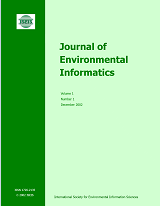doi:10.3808/jei.201800392
Copyright © 2024 ISEIS. All rights reserved
Equivalent Model for Calculating Fault Current from Inverter-Interfaced Renewable Energy Generators
Abstract
With decarburization of the electrical grid, the penetration of renewable energy generators (REGs) is increasing. Consequently, the operating environment of the electrical grid is greatly altered and the existing protection system for the electrical grid cannot adapt to the new environment. In order to solve the existing protection problems, the equivalent model for calculating short-circuit current of the REGs should be built. The calculation model depends on the fault current characteristics of REGs that are different from the conventional generators (synchronous generators). The short-circuit current characteristics of REGs are related with the corresponding inverter control strategies. However, the strategies are diverse from manufacturer to manufacturer and are unknown to the public. As a result, it becomes difficult to reveal the fault current characteristics and realize fault current calculation without knowing the control strategies. In this paper, the focus is on the fault current characteristics and their calculation models of inverter-interfaced REGs (IIREGs). To reveal the relationship between the inverter’s control strategies and the IIREG’s short-circuit current characteristics, a coordinated control strategy for gird-tie inverter and DC-link chopper is proposed. The main factors affecting the transient and steady-state shortcircuit currents are analyzed and revealed for IIREGs. Further, the calculation model of the steady-state short-circuit current from IIREGs is established, which is independent of the specific inverter’s control strategies. Finally, based on the experimental test bench, both the fault ride through (FRT) capability and short-circuit current model of IIREG are verified. The results can be used for assessing and improving the relay protection strategies of the electrical grid with lots of IIREGs.
Keywords: Asymmetrical fault-ride-through control, fault current characteristics, inverter-interfaced renewable energy generators, solar power, wind power
Supplementary Files:
Refbacks
- There are currently no refbacks.
